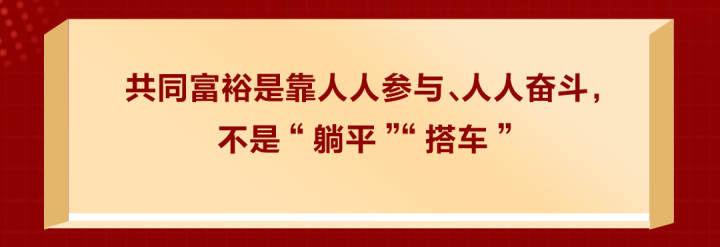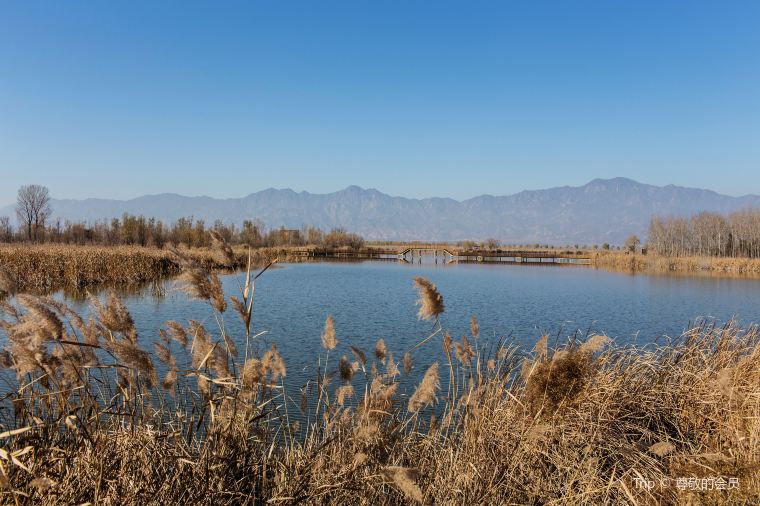Walking a Mile in China’s Shoes, Part III Summary
- andrewsingerchina
- Jan 12, 2022
- 7 min read
Updated: Sep 10, 2025
Andrew Singer Talks About China and America, Vol. 1, Issue 29
Happy New Year! I hope 2022 is a safer and healthier year for all. This first issue of the new year is the third installment in trying to better understand, or at least frame, the issues between China and America beyond the headlines. From the Chinese perspective.
Walking a Mile in China’s Shoes, Part III: China’s Role and Power
Beijing Millions of Migratory Birds
One More Thought (China on the Far Side of the Moon)
Part I discusses the Chinese people’s perceptions of America. Part II covers the Chinese people’s perceptions of China. This Part III deals with the Chinese leadership’s view on the role of China at home and abroad as well as its role in leading China. These are my three takeaways (from the Chinese perspective):
China is rejuvenated, proud, and intent on commanding respect and controlling its own narrative and destiny.
China’s system of authoritarian capitalism and social control is not only good for the Chinese people and country, but is also potentially a good model for the broader world.
The Chinese Communist Party is the practical, legal, and indispensable creator, arbiter, and guarantor of China’s success, of China’s stability, of China’s power and place on the world.
Part III: China’s Role and Power
Students with Chinese Communist Party flag (www.theguardian.com - Getty)
The Past. To begin, we must stand back for perspective. Future history books may well record that the two-plus-millennia Chinese Imperial System (in functional form, if not name) did not end with the collapse of the Qing Dynasty in 1911. After decades of weakening and fracturing, the more than 250-year rule of the Manchus collapsed. There followed a brief (by Chinese standards) four decades of fighting among groups jockeying to claim the so-called Mandate of Heaven (the right to lead). In 1949, one of the contestants won and claimed the mantle.
As with many dynastical transitions, the first decades of the Chinese Communist Party Era were chaotic while control was solidified, with frequent death, famine, warfare, and struggle. The Party has continually experimented with different policies and programs since the beginning. Initially, many of them failed spectacularly to stabilize the country, spur economic development, and help the people. Subsequently (say, the past brief four decades), many of them have succeeded spectacularly to bring China to her current condition.
Throughout this entire post-1949 period, the same group (now organized by ideology and membership as opposed to hereditary rule) has kept firm control and remained in charge. The leaders change over time, but the framework has been ingrained, streamlined, and strengthened. This is the lens through which to view China from the inside.
The Present. The successes in China (longer life expectancy, technology development, increasing standards of living and quality of life, and growing wealth and power) have been tremendous. For a geographically large country such as China with 1,400,000,000 people, there has been overall stability, growth, and dramatic progress.
The Chinese Communist Party fervently sees itself to be the practical, legal, and indispensable creator, arbiter, and guarantor of China’s success, of China’s stability, of China’s power and place on the world. All of the Party’s actions are designed to keep the Party in preeminence leading this rejuvenation and to combat threats thereto. From the government’s perspective, a happy populace is a content populace. A content populace is a supportive populace. The Party has staked itself to China’s forward momentum.
President Xi Jinping has been consolidating power since 2013. During this time, the overall economy has continued to swell, and a hypermodern, online, and connected society has further blossomed. At the same time, inequities between “have’s and have nots” worsened, and life in China has often been a rollercoaster of social, cultural, and economic mania. There has been greater questioning of the past, the present, and the future, all of which has recently begun crashing home. It has the potential to threaten the worst outcome—instability.
The Future. Now that China has achieved critical mass in its economy, the country is no longer willing to let others sit without it at the world board of directors’ table. Chinese leadership, led by Xi Jinping, believes that its model of authoritarian capitalism and social control is not only good for the Chinese people and country, but is also potentially a good model for the broader world.
“Common Prosperity” depends on everyone’s participation, everyone’s struggle,
not “lying flat” and ‘hitchhiking” (news.cctv.com)
Domestic China. Domestically, China’s leadership decided in 2021 that the deleterious conditions created by the economically and socially more-liberal policies of the past several decades needed to be addressed. And in a bold fashion.
Thus, under the mantle of “Common Prosperity,” last year saw the beginning of a concerted top-down push for socialist (i.e., collective) strengthening and response of society, culture, and art to social ills as well as a more equitable distribution of economic and societal resources. This takes various forms, many of which are in their early stages. Each of them are and will be designed to combat threats to China’s rise.
Charitable donations by leading companies and their senior leaders are skyrocketing as the government has stressed giving back to the people in the name of ameliorating inequities and supporting those less well-off and secure. Writers and artists are being encouraged to support socialist morals and decency. Social media influencers are being required to support core socialist values and abide by the law.
The Chinese government wants China to be self-reliant. This does not mean complete decoupling from the global world, but it does mean establishing China as a technology power that is less dependent on externalities that could impact China’s continued growth, development, and security. The China 2035 vision plan and Chinese R&D are designed to ultimately control more of the nuts and bolts of current and future technology. China is working to lock down needed, natural resources and become the new standard-bearer for technology and infrastructure abroad, not only with railway connections to Southeast Asia and beyond, but also with laser-based communications in space.
Self-reliance also takes somewhat more subtle forms of discouraging foreign contact and communications throughout Chinese society. For example, English language signage in the Beijing subway system is being replaced with pinyin. English instruction is being de-emphasized in schools. Celebration of Western holidays is being frowned upon (which sometimes crosses over into outright hostility and backlash). Preferential tax treatment for foreign workers in China was slated to be reduced in 2022, and though the new regulations have since been delayed, such expats remain in the crosshairs. Foreign students and researchers have been increasingly shut out of the country and its academic and historical resources and opportunities.
The Communist Party is engaged in a sometimes proactive, more often reactive, dance, juggling vibrant often conflicting domestic forces. There are private citizens who are vocal when life is not going well. There are nationalists who are vocal when China is slighted or attacked. There are so-called New Red Guards who yearn for a return to a less capitalist China. There are hi-tech and business behemoths and entrepreneurs who are forces to be reckoned with. There are public sector employees competing with private sector employees. There are behind-the-scenes contretemps within political circles. China is a swirling stew of impulses that the government struggles to shut down, encourage, and/or contain.
Countries in the Regional Comprehensive Economic Partnership Free Trade Agreement
(Tiger 7253 - CC BY-SA 4.0, https://commons.wikimedia.org)
International China. China is taking pages from America’s twentieth century playbook. It is employing both soft and hard power diplomatic and economic measures to spread China’s voice and seek influence and power abroad. China wants respect. China wants security in her own neighborhood and beyond. China is striving to break through American dominance amid increasingly-vocal antagonism.
China is one of the fifteen charter members of the recently-launched Regional Comprehensive Economic Partnership (RCEP), which is billed as the largest free trade agreement in history. RCEP covers nations in East Asia and Southeast Asia as well as Australia and New Zealand. This grouping embraces 30% of the world population and GDP, respectively, in an agreement to work together. RCEP has the potential to reshape economies and balance of power in Asia.
Still in Asia, China has been resolute in taking more control over the South China Sea, a body of water that serves as the maritime link between China and shipping routes to the Middle East and Europe and a rich source of natural resources.
China has been investing heavily abroad, winning investments, resources, and friends in Africa and the Middle East.
Chinese-built, standard gauge Addis Ababa, Ethiopia-Djibouti Railway (www.africacenter.org)
China has been taking more leadership positions at the United Nations. China recently called for international rules governing artificial intelligence for military purposes. China and the other four permanent members of the UN Security Council pledged at the beginning of January to work to reduce nuclear arsenals and not engage in nuclear warfare.
When the United States held a Summit for Democracy in December, the Chinese also spoke up. The Russian and Chinese Ambassadors wrote a joint article declaring their respect for people’s democratic rights. The Chinese State Council Information office released a white paper entitled “China: Democracy that Works.” Foreign Policy magazine published an article discussing why China reacted so forcefully to the Democracy Summit.
The Chinese leadership, both domestically and internationally, is intent on China controlling its own narrative and destiny. The new China believes in utilizing the power of its economic and political heft with increasing vigor.
Beijing’s Millions of Migratory Birds
Black Stork in flight (www.scmp.com/lifestyle/travel-leisure/article/3118345)
During the winter of 2019-2020, Beijing saw 1.5 million migratory visitors. During this winter of 2021-2022, it is estimated that Beijing will be visited by more than three million migratory visitors. There may not be human spectators from abroad at the upcoming 2022 Winter Olympics in Beijing because of the Covid-19 pandemic, but there will be birds in the region. A lot of them.
Gordon Dumoulin has written that “More than 500 bird species have been recorded in the Beijing municipality. Rich wetlands such as Miyun Reservoir and Wild Duck Lake, dense mountains, grasslands and the many city parks makes Beijing an excellent accommodation for permanent and migrating birds.”
Wild Duck Lake is part of the Yeyahu (Wild Duck Lake) Wetland Park (野鸭湖温湿地公园) located about 100 kilometers (sixty miles) northwest of Beijing near the Badaling Great Wall. The Park contains 3,939 hectares (9,700+ acres) of wetlands. It is the largest wetland nature reserve in North China.
Wild Duck Lake Wetland Park (www.trip.com)
“As the natural environment improves and protection efforts expand, Beijing's biodiversity has become richer, the [Beijing Municipal Forestry and Parks Bureau] said, noting that it's among the most diverse capitals in the world for wildlife.”
One More Thought (China on the Far Side of the Moon)
Jade Rabbit (www.cnet.com, CNSA/CLEP/Red circle by Amanda Kooser/CNET)
The world was recently a buzz about a “mystery hut” that the Chinese Yutu-2 rover found on the dark side of the moon. Not to burst bubbles, but it is not a relic from Cybertron. It is a good-sized rock that has been named Jade Rabbit after the rover that discovered it.




















Comments